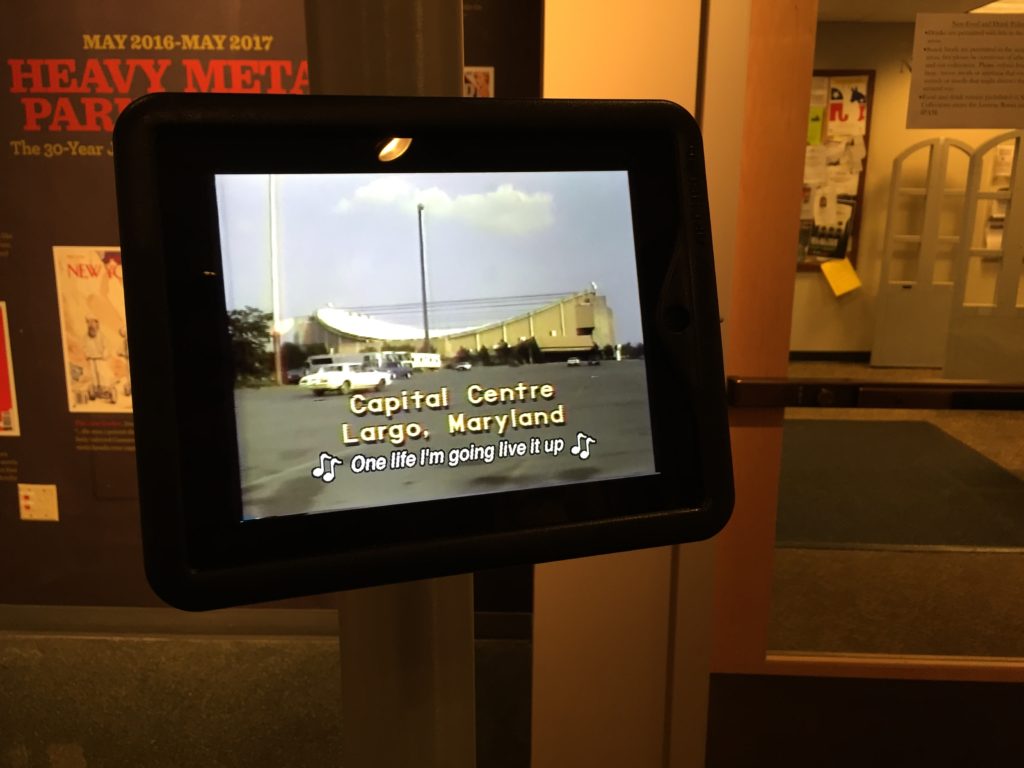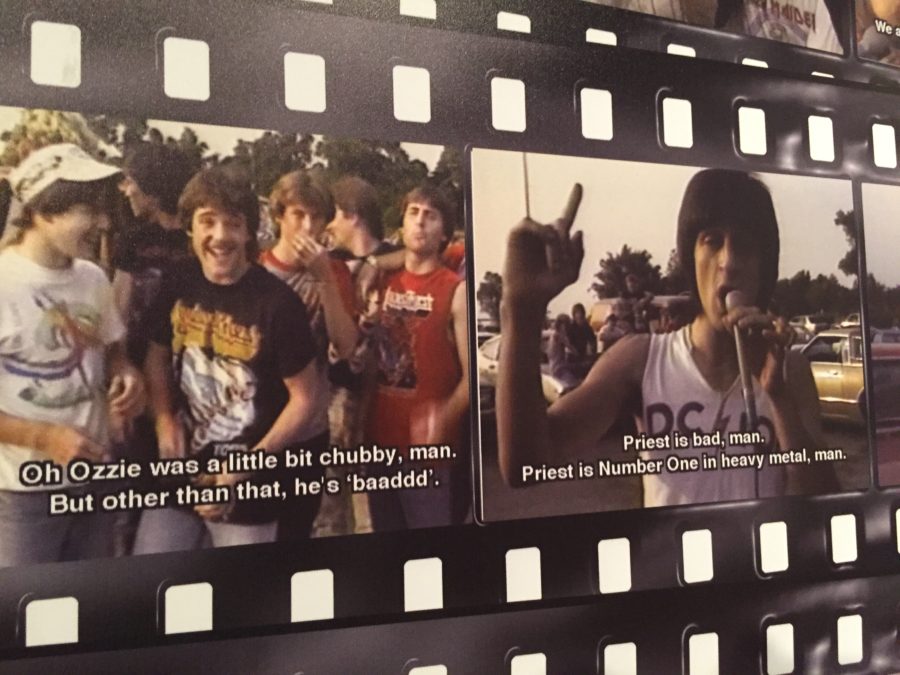In the ’80s, if you wanted to capture your friends or yourself being drunk and stupid, you had to work for it.
That’s basically what Heavy Metal Parking Lot is. It’s essentially a movie — if you want to call a plotless 16 minutes and 41 seconds a movie — of drunk teenagers making asses of themselves in a parking lot.
But Heavy Metal Parking Lot has the distinct privilege of being a featured exhibit at the University of Maryland for the next year. Heavy Metal Parking Lot: The 30-Year Journey of a Cult Film Sensation aims to tell the story of how a low-profile 1986 video wound up all over the country — at a time when it wasn’t so easy.
Here’s the short version: Jeff Krulik was working for public-access television in Maryland and had access to recording equipment. His friend John Heyn had the idea to go to the parking lot outside a Judas Priest concert and just see what they could come up with. The two aspiring documentary filmmakers recorded about 65 minutes of footage on the afternoon of May 31, 1986, outside the Capital Centre in Landover.

(James Doubek/WAMU)
Heyn edited it down to the most entertaining encounters — almost all of which involve young people in various degrees of intoxication. And because Heyn had a job at a video dubhouse, they “gave out copies out like water,” Krulik says.
In the early ’90s, some of those copies make their way through friends out to the West Coast, and to places like Mondo Video A-Go-Go, a cult video store in Los Angeles. Dubs got into the hands of people like director Sofia Coppola, who wanted to use it in a TV show, and onto tour buses of bands like Nirvana.
It was protoviral video.
“The story we wanted to tell was kind of twofold,” says Laura Schnitker, the acting curator of the University of Maryland’s Mass Media & Culture collection, who is co-curating the exhibit with Krulik. “First we wanted to tell how the film was created, like what equipment they used and what their initial thinking was. And then we want to talk about how the film went viral at a time when there was no internet and no digital film.”
The exploration of this dissemination is one of the reasons the university agreed to host the exhibit.
Additionally, Schnitker says she was able to “sell” her colleagues on the exhibit because it’s very Maryland-focused. Krulik is a University of Maryland grad (’83) and a lifelong state resident. Schnitker notes the Maryland accents of the people in the movie and its documentation of a “really identifiable subgenre” — working-class white Marylanders, with distinct hair and clothes.
Co-curator Laura Schnitker notes the Maryland accents of the people in the movie and its documentation of a “really identifiable subgenre” — working-class white Marylanders, with distinct hair and clothes.
Krulik donated his archive of source material and video to the university’s Mass Media & Culture collection last year. He pitched the idea of the exhibit in anticipation of the movie’s 30th anniversary, and also as another way to celebrate the donation.
The exhibit is nestled in a small corridor between the Clarice Smith Performing Arts Center’s main building and the Michelle Smith Performing Arts Library. The floor is gray with yellow stripes, in tribute to the parking lot.
You can see the whole thing in about the time it takes to watch the movie. VHS tapes of Judas Priest and Dokken (the other band that played that night) are on display. One wall contains screenshots of the movie’s “stars” and their notable quotes, including such words of wisdom as:
“Priest is bad, man. Priest is Number One in heavy metal, man.”
“Joints across America.”
“I’d jump his bones!”
“Who are you here to see tonight?” “Your mother!”
Krulik especially wanted to “pay homage” to the Cap Centre, Schnitker says, noting its importance to people who grew up in Maryland in the ’80s and ’90s. The exhibit features a brief history of the venue, along with asphalt taken shortly before its demolition in 2002.
Visitors can see a handwritten postcard from John Waters, sent to John Heyn in 1987. “Your film was great — what monsters!” Waters writes. In what must be truly a feat of accomplishment for Heyn and Krulik, the director of Pink Flamingos writes that Heavy Metal Parking Lot “gave me the creeps.”
In what must be truly a feat of accomplishment for Heyn and Krulik, director John Waters writes that Heavy Metal Parking Lot “gave me the creeps.”
That postcard is one of Schnitker’s favorite items, along with a ticket stub from the concert. It harks back to the days when people saved Ticketmaster stubs as mementos. Scannable codes on smartphone screens these days just don’t have the same charm.
There’s also a wall filled with pictures of magazines from the ’90s and 2000s that mentioned the movie. Request magazine in August 1999 referred to “a Wild Kingdom-style study of haystack-haired headbangers like ‘Zebraman,’ drug-legalization champion Gram, and other Jack Daniels-swilling Beavises and Butt-heads in their natural environment.”
Even though it’s a Maryland story, something like Heavy Metal Parking Lot probably could have happened at any Judas Priest concert on that tour.
What makes it unique is that events weren’t “documented to death like things are today,” Krulik says. “It was a real novelty to be in that kind of environment, that place with professional video equipment.”
The exhibit will be up through May 2017, after which it will be put back with the rest of Krulik’s collection in the university’s Hornbake Library. Schnitker and others are creating a digital version to put online.
On a summer day with the semester over, not many students passed by the day I saw the exhibit. But Krulik is hopeful students will take a second to be inspired when they do walk through. Perhaps from some words on the wall: “Heavy metal rules!”

(James Doubek/WAMU)
“Heavy Metal Parking Lot: The 30-Year Journey of a Cult Film Sensation” is on view at the Gallery at the Michelle Smith Performing Arts Library through May 2017.


